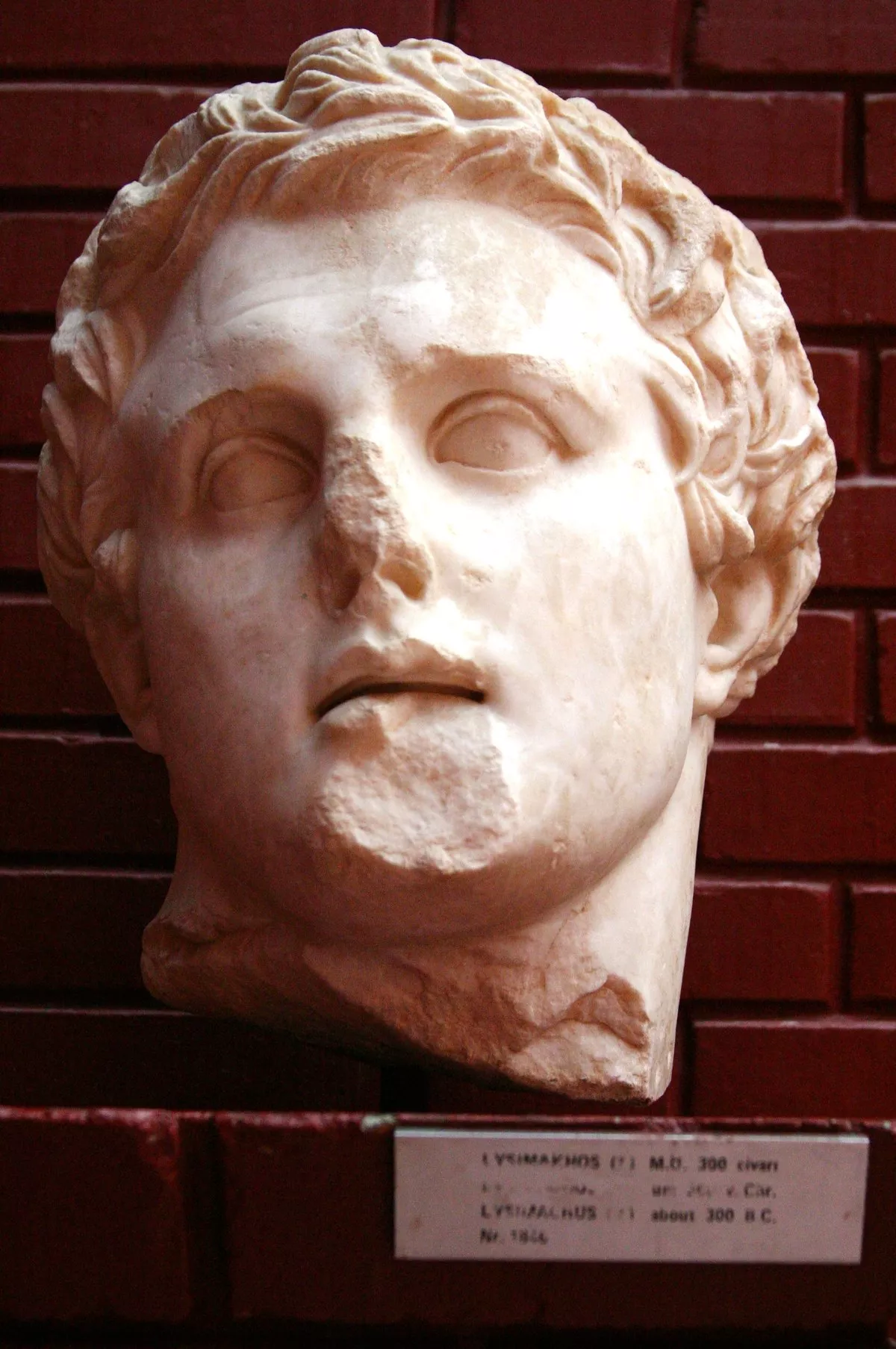 1.
1. Lysimachus was a Thessalian officer and successor of Alexander the Great, who in 306 BC, became king of Thrace, Asia Minor and Macedon.

 1.
1. Lysimachus was a Thessalian officer and successor of Alexander the Great, who in 306 BC, became king of Thrace, Asia Minor and Macedon.
Lysimachus was born circa 360 BC, to a family of Thessalian stock but they were citizens of Pella in Macedonia.
Lysimachus's father was a nobleman of high rank who was an intimate friend of Philip II of Macedon, who shared in Philip II's councils and became a favourite in the Argead court.
Pausanias and the historian Justin both record a story that Alexander had Lysimachus thrown to a lion as a punishment.
Some coins issued during Lysimachus's appointment had his image on one side and a lion on the other.
Lysimachus was probably appointed Somatophylax during the reign of Philip II.
In 315 BC, Lysimachus joined Cassander, Ptolemy and Seleucus against Antigonus, who diverted his attention by stirring up Thracian and Scythian tribes against him.
In 302 BC, when the second alliance between Cassander, Ptolemy and Seleucus was made, Lysimachus, reinforced by troops from Cassander, entered Asia Minor, where he met with little resistance.
Lysimachus' share was Lydia, Ionia, Phrygia and the north coast of Asia Minor.
Lysimachus tried to carry his power beyond the Danube, but was defeated and taken prisoner by the Getae king Dromichaetes, who set him free in 292 BC on amicable terms in return for Lysimachus surrendering the Danubian lands he had captured.
Lysimachus left Pyrrhus in possession of Macedonia with the title of king for around seven months before Lysimachus invaded.
Amastris had been murdered by her two sons; Lysimachus treacherously put them to death.
In 281 BC, Lysimachus crossed the Hellespont into Lydia and at the decisive Battle of Corupedium was killed.
Lysimachus' body was given over to another son, Alexander, by whom it was interred at Lysimachia.